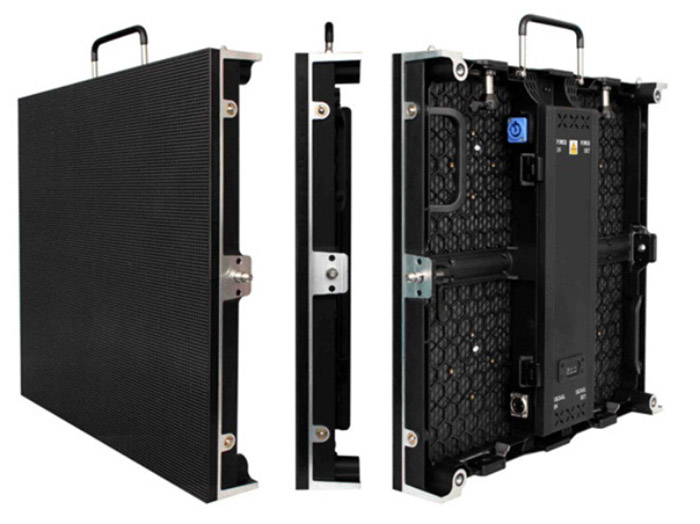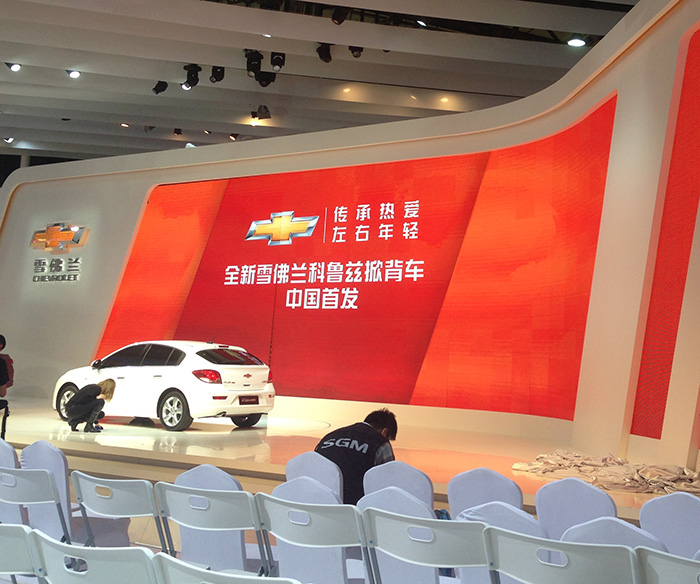How to eliminate the distortion caused by the amplifier
Harmonic distortion often occurs when the amplifier works. Through spectrum analysis, it is found that the low-order harmonics of most amplifiers are stronger, and the second-order harmonics are the main ones, and the lower-order harmonics of each order are weakened. The higher harmonics are small, full and bright to hear, full of vitality, good sense of transparency, pure sound, which is a beneficial side. However, if we make improper adjustments or use poor quality components when making a tube amplifier, some other distortions that are incompatible with the Hi-Fi concept will also occur. So how to "strengthen the advantages and avoid the shortcomings, and create quality products"?
1. Non-linear distortion
Non-linear distortion is mainly caused by the tube working at the curved part of the characteristic curve. There are two other situations. One is the improper selection of the operating point (high or low), and the other is the excessive signal voltage.
As shown in Figure 1: Non-linear distortion (a) The negative voltage of the grid is too large, and the operating point (Q) is too low, which causes the tube to work to the lower curved part of the dynamic characteristic curve. Distortion. Fig. 1 (b) The negative pressure of the grid is too small, so that the electron tube is operated to the curved part of the upper end of the dynamic characteristic curve. As a result, the positive half cycle of the anode current becomes flat and distortion occurs. Although the negative voltage of the gate is selected correctly in Fig. 1 (c), the signal voltage is too strong, so the anode current becomes flat in the positive half cycle and negative half cycle, and distortion occurs. Figure 1 (d) The gate negative pressure and signal amplitude are properly selected, so the distortion is very small
It can be seen from the above: when the amplifier has nonlinear distortion, if the input is a sine wave, then the amplified signal becomes a non-sinusoidal wave, and the non-sinusoidal wave can be decomposed into DC, fundamental and higher harmonic components. So the characteristic of nonlinear distortion is that a new frequency component appears at the output of the amplifier.
The experiment proves that as long as the nonlinear distortion coefficient of the low-frequency amplifier does not exceed a certain range, the human ear is not easy to detect, under normal circumstances. The nonlinear distortion factor of the amplifier should not exceed 10%, and the maximum should not exceed 15%.
Based on the above analysis, we can be sure that nonlinear distortion is harmful to the sound quality. It has been proved through practice that this distortion makes the amplifier deteriorate the sound quality, hoarse, and the language is ambiguous when the amplifier is amplifying the language. In order to reduce the nonlinear distortion, it is necessary to correctly select the operating point (Q) and the signal voltage, so that the amplifier works in the linear part of the dynamic characteristic curve of the tube, that is, in the class A operating state It is very important), and Class B and Class A and B will produce large nonlinear distortion, which must be reduced by using a push-pull circuit before they can be applied.
2. Frequency distortion
In many cases, the signal to be amplified by the amplifier is not a pure sine wave. For example, language is composed of many sine waves with different frequencies superimposed on a certain proportion. To make the amplified waveform the same as the input waveform, it requires The amplifier has the same amplification factor for all frequency components. If the amplification factor is different for different frequency components, the original proportional relationship between the frequency components will change, thus making the output waveform inconsistent with the input waveform. As shown in Figure 2: Frequency distortion (a) indicates that the gate input signal contains the fundamental wave and the second harmonic, and Figure 2 (b) indicates the amplified output signal, which also has the fundamental wave and the second harmonic. However, because the amplification factor of the second harmonic of the amplifier exceeds that of the fundamental wave, the amplified synthesized waveform is distorted and frequency distortion occurs.
We often use the frequency characteristic curve to represent the frequency distortion of the amplifier. The so-called frequency characteristic curve is the relationship curve between the amplification factor K of the amplifier and the frequency f. An ideal amplifier without frequency distortion, the frequency characteristic curve is a straight line parallel to the horizontal axis, as shown by the dashed line in Figure 3. The actual frequency characteristic curve of the Hi-Fi amplifier is shown as the solid line in FIG. 3. This curve shows that within the (fn-fm) audio frequency range, the amplification factor is uniform, and the frequency distortion generated by the amplifier is very small. However, the frequency characteristics of the transformer-coupled voltage amplifier are not a flat straight line, as shown in the solid part of Figure 4. As the frequency decreases, the inductive reactance of the transformer primary coil decreases. As the voltage across the primary coil of the transformer and the voltage of the secondary coil decrease, the amplification factor of the amplifier decreases. As the frequency increases, at a certain frequency, Co (equivalent capacitance, which includes not only the input capacitance of the lower tube and the distributed capacitance of the wiring, but also the distributed capacitance of the secondary coil) and the leakage inductance can produce series resonance Therefore, the output voltage increases, the magnification increases, and a peak appears. As the frequency increases again, the impedance exhibited by Co is very small, and the amount of amplification quickly decreases.
Because the actual load of the amplifier is not pure resistance, but contains inductive components. Therefore, the actual load impedance ZL will increase and decrease with the increase and decrease of the signal frequency, so that the anode load impedance Za also increases and decreases with the increase and decrease of the signal frequency. This will cause two undesirable phenomena:
(1) Increased frequency distortion;
(2) The nonlinear distortion increases (because the anode load impedance is not equal to the optimal load impedance required by the electron tube).
When the amplifier has severe frequency distortion, the amplified language will be blurred. If the low frequency part of the language cannot be amplified well, the sound will become sharp and harsh, and it will be very unpleasant to listen to. In order to overcome the above shortcomings, an RC circuit is usually connected in parallel to the primary side of the output transformer, as shown in Figure 5, so that the total load impedance of the amplifier does not change with frequency as much as possible
The common values ​​of RC are:
C = 0.001 uF ~ 0.01uF
R = (1.5 ~ 2) Za is the best
Sometimes at the primary side of the output transformer, only one (0.001uF ~ 0.005uF) capacitor is added, which can also play a role in compensating the increase of load impedance at high frequency.
In the resistance-capacitance coupling amplifier circuit; generally use high-quality large-capacity (3.3uF ~ 10uF) copper film or silver film super capacitors (such as the Danish JENSEN capacitor) as coupling capacitors to enhance the ability to drive low-frequency signals to The frequency characteristic curve tends to be a straight line, ensuring Hi-Fi amplification.
3. Phase distortion
Due to the presence of reactance elements in the amplifier, the phase relationship between the frequency components in the non-sinusoidal signal changes, which makes the output waveform inconsistent with the input waveform, which is phase distortion.
The above analyzes the nonlinear distortion, frequency distortion and phase distortion. One of their common points is that the output waveform generates distortion. The essential difference between them is:
(1) The causes of distortion are different. Frequency distortion and phase distortion are caused by the presence of reactive components (inductors, capacitors) in the circuit, while nonlinear distortion is caused by non-linear components (tubes, core transformers, etc.) in the circuit.
(2) The frequency components in the output signal of the amplifier are different. Frequency distortion and phase distortion can only change the relationship between the amplitude and phase of each frequency component in the signal, while the frequency component of the output signal is the same as the input signal without change. Non-linear distortion requires new frequency components in the output signal.
After recognizing the difference between them, we can reduce or eliminate the distortion according to the characteristics and causes of various distortions.
In fact, three kinds of distortion may appear in the same amplifier. Which kind of distortion has the greatest impact on the operation of the amplifier must be analyzed in detail. For example, when the speech signal is amplified, the human ear has no obvious sense of phase distortion, which is nonlinear. Distortion and frequency distortion, the human ear also feels different, the human ear is more sensitive to nonlinear distortion. Therefore, in audio amplifiers, special attention should be paid to reducing nonlinear distortion, followed by reducing frequency distortion, and phase distortion generally does not need to pay attention to it.
With Curved LED panels, The LED screen can be mounted in different location, will have wider viewing angle and more option. both concave and convex due to the diameter, Bringing high-tech innovation to your digital signage with curved displays is not only eye-catching but also efficient. The Indoor Curved LED Display provides strong long-term investment, low maintenance costs and energy requirements while adapting to existing building curves or increasing interest in the pupils and the square.
Recycle lost advertising space with our display solutions, empowering you to create 360-degree emotional connections with customers and prospects. It offers cylindrical LED signage, no matter what you like - usually without structural reinforcement.
At the airport: Visitors who frequent the big cities are full of praise for their experience in the city, but they are saddened by the transit times to and from the country's largest metropolis. Airport managers understand that they need to make up for this shortcoming in order to get rid of their bleak reputation, revitalize the tired airport audience, and remind them of the true character of the big city.
At school: Universities know they need a goal to identify students who drive business growth. In order to promote the spirit of the school's commitment to innovation, the college must promote a higher level of cooperation between teachers and students. The government needs a space that can provide large open areas, and visitors to all buildings can interact by chance, but in order to build such a spontaneous network, the building needs an anchor point, a focus that immediately draws everyone's attention.
High Definition and can be adjusted, can showing DVD, TV, Dynamic images, VCRS, graphs, letters and animations for 24 hours. Sharp, colorful, synchronized with computer monitor. Waterproof, Sun-screen, antisatatic, damp proof, anti -freeze, anti-thundering etc.Best equality, commendably solve the problem of the mosaic, have the excellent consistency of light.To pictures and character, have clear, exquisite and real display effect of led sign.Big viewing angle to horizontal line and vertical line, can see at every angle at this range, no picture change, no color excursion.Can repair each led lamps, so the cost of maintain is lower, and easy to repair for led sign!


Indoor Curved Led Display,Transparent Curving Led Screen,Indoor Stage Curved Led Display,Indoor Hanging Curved Led Display
Shenzhen Bako Vision Technology Co., Ltd. , http://www.rentalleddisplays.com
